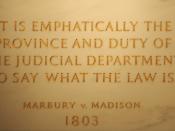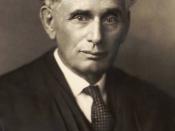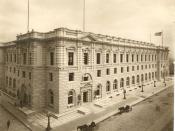Olmstead v. United States (1928)
Opinion delivered by Chief Justice Taft
Vote: 5-4
Case reached Supreme Court by writ of certiorari.
Facts:
The evidence in the records discloses a conspiracy of amazing magnitude to import, possess, and sell liquor unlawfully. Involved were not less than fifty employees, two sea-going vessels for transportation of the goods to British Columbia, a ranch beyond the city limits of Seattle with a large underground cache to store the liquor, and many other caches around the area of Seattle, a maintained city office with executives, secretaries, salesmen, deliverymen, dispatchers, bookkeepers, collectors, scouts, and an attorney. Olmstead was the leading conspirator and manager of the business. His invested capital brought him 50 percent of the total income of the company (said to be over 2 million/year), and the other 50 percent went to 11 other investors.
In the main office building there were three different telephones with separate lines for each.
Telephone communication was made throughout the city, the homes of the investors, customers, Vancouver, to and from the office building and ranch. Times were fixed for the delivery of the 'stuff' to places along the Puget Sound and from there was transported to the various caches.
The information leading to the arrests was made primarily by four Federal prohibition officers. The officers placed small wires along the main lines outside the homes of the four main conspirators and that of the office. No intrusion was made into private property. Olmstead was found to have made dealings with members of the Seattle police to secure the release of any of the conspiring parties that might get arrested.
Procedural History:
Petitioners were convicted in the District Court of the Western District of Washington for conspiracy to violate the National Prohibition Act. The conviction was upheld upon appeal...


